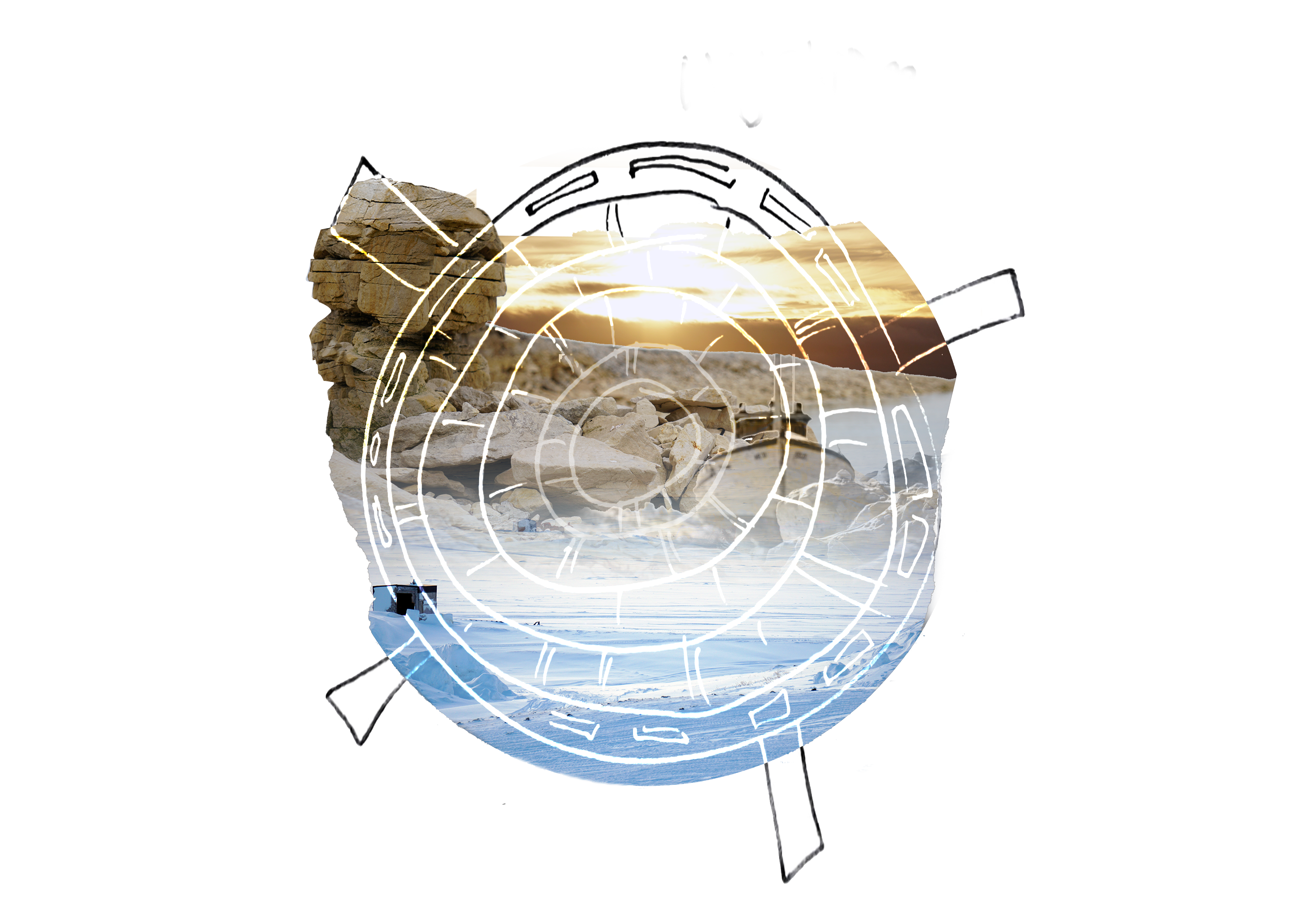The Land: Difference between revisions
No edit summary |
No edit summary |
||
| Line 3: | Line 3: | ||
Donna Haraway argues, inspired by Ursula le Guin (1986), that the kind of stories we need telling in these times are not those of the Antropos. Not those of the capitalized Human in History and all the weaponized tools such a Human might carry, but those of the netbag, the basket, or any other concave shape. Such a netbag, or even a pair of cupped hands enables carrying things along, and receiving and giving away. Such exchange suggests ongoing stories of becoming with-; a collective making and unmaking of the world with ‘companion species’ as ‘kin’ (Haraway, 2003 ; 2016). These stories acknowledge messy, earthbound, multispecies entanglements, rather than man-making tales of the single hero. | Donna Haraway argues, inspired by Ursula le Guin (1986), that the kind of stories we need telling in these times are not those of the Antropos. Not those of the capitalized Human in History and all the weaponized tools such a Human might carry, but those of the netbag, the basket, or any other concave shape. Such a netbag, or even a pair of cupped hands enables carrying things along, and receiving and giving away. Such exchange suggests ongoing stories of becoming with-; a collective making and unmaking of the world with ‘companion species’ as ‘kin’ (Haraway, 2003 ; 2016). These stories acknowledge messy, earthbound, multispecies entanglements, rather than man-making tales of the single hero. | ||
Whether collecting fish samples, or camping out next to a Weir. | Whether it is replacing the runners of a qamutiq, collecting fish samples, or camping out next to a Weir. These events provide and require knowledge that cannot be disconnected from its connection to the land. | ||
<div class="next_choice"> | <div class="next_choice">It is not so much that science and IQ would paint a complementary, but separate, picture of the land. It's that neither the land, nor IQ, nor western science about such land can exists in intelligible ways outside of their intra-dependent relationships. Any differentiation made between these knowledges and the land are artificial, not pre-determined. | ||
Go outside, and touch some dirt. | Go outside, and touch some dirt. | ||
Take a walk</div> | Take a walk</div> | ||
<span class="return to cut 3 link" data-page-title="Wayfaring_the_BW_project" data-section-id="9" data-encounter-type="return">[[Wayfaring the BW project#Meetings Spring 2022 Gjoa Haven|Return to Cut 3: Meetings Spring 2022 Gjoa Haven]]</span> | <span class="return to cut 3 link" data-page-title="Wayfaring_the_BW_project" data-section-id="9" data-encounter-type="return">[[Wayfaring the BW project#Meetings Spring 2022 Gjoa Haven|Return to Cut 3: Meetings Spring 2022 Gjoa Haven]]</span> | ||
Revision as of 12:26, 1 March 2025

Donna Haraway argues, inspired by Ursula le Guin (1986), that the kind of stories we need telling in these times are not those of the Antropos. Not those of the capitalized Human in History and all the weaponized tools such a Human might carry, but those of the netbag, the basket, or any other concave shape. Such a netbag, or even a pair of cupped hands enables carrying things along, and receiving and giving away. Such exchange suggests ongoing stories of becoming with-; a collective making and unmaking of the world with ‘companion species’ as ‘kin’ (Haraway, 2003 ; 2016). These stories acknowledge messy, earthbound, multispecies entanglements, rather than man-making tales of the single hero.
Whether it is replacing the runners of a qamutiq, collecting fish samples, or camping out next to a Weir. These events provide and require knowledge that cannot be disconnected from its connection to the land.
Go outside, and touch some dirt.
Take a walk
